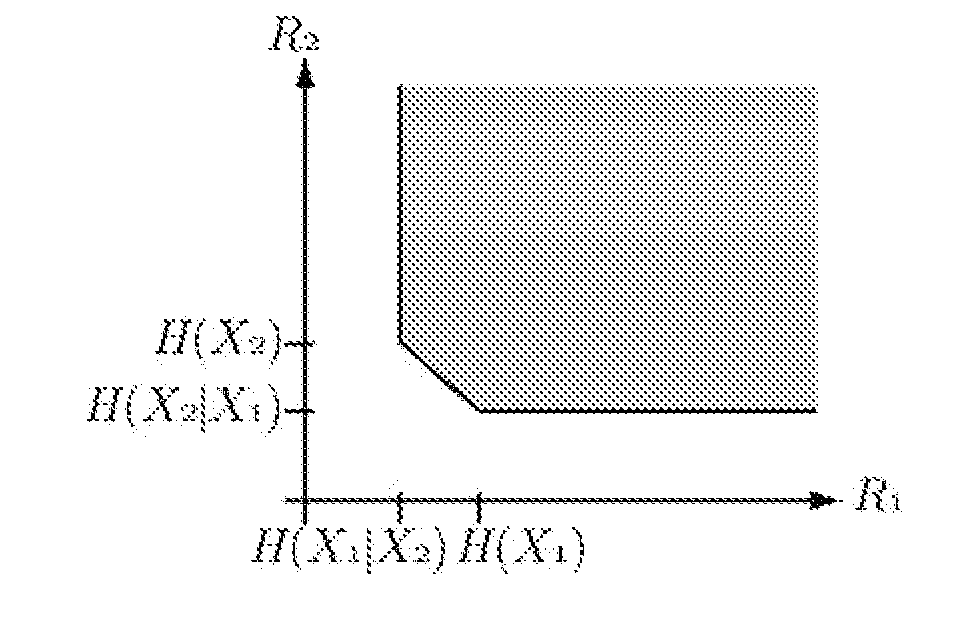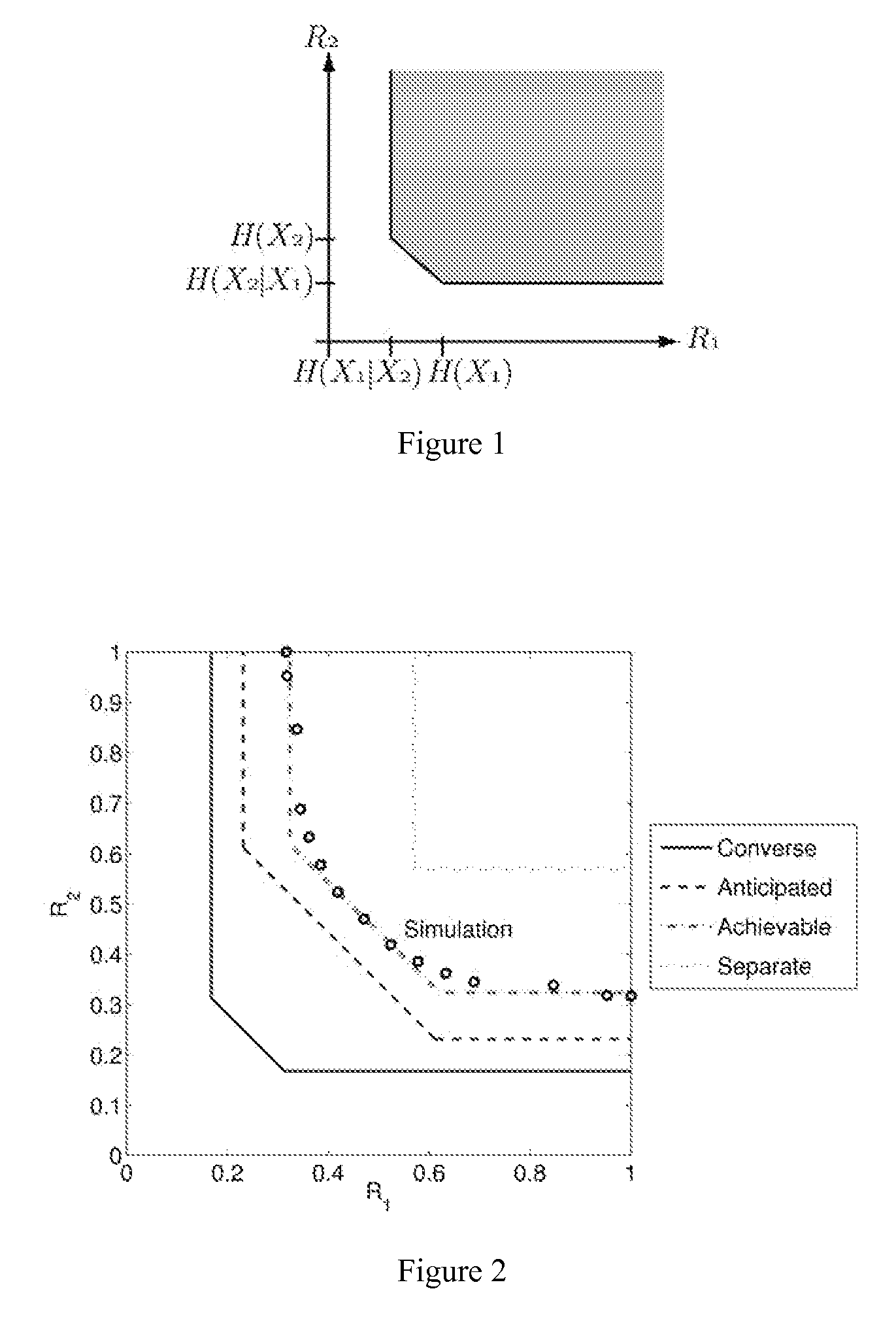Method and apparatus for distributed compressed sensing
a distributed compression and sensing technology, applied in the field of distributed source coding and compressed sensing methods and systems, can solve the problems of lossless distributed compression, inability to easily extend to lossy compression setups, and reduced communication criticalness
- Summary
- Abstract
- Description
- Claims
- Application Information
AI Technical Summary
Benefits of technology
Problems solved by technology
Method used
Image
Examples
Embodiment Construction
[0060]A core tenet of signal processing and information theory is that signals, images, and other data often contain some type of structure that enables intelligent representation and processing. The notion of structure has been characterized and exploited in a variety of ways for a variety of purposes. We focus on exploiting signal correlations for the purpose of compression.
[0061]Current state-of-the-art compression algorithms employ a decorrelating transform such as an exact or approximate Karhunen-Lèeve transform (KLT) to compact a correlated signal's energy into just a few essential coefficients (see R. A. DeVore, B. Jawerth, and B. J. Lucier, “Image compression through wavelet transform coding,” IEEE Trans. Inf. Theory, vol. 38, no. 2, pp. 719-746, March 1992; J. Shapiro, “Embedded image coding using zerotrees of wavelet coefficients,” IEEE Trans. Signal Processing, vol. 41, no. 12, pp. 3445-3462, December 1993 and Z. Xiong, K. Ramchandran, and M. T. Orchard, “Space-frequency ...
PUM
 Login to View More
Login to View More Abstract
Description
Claims
Application Information
 Login to View More
Login to View More - R&D
- Intellectual Property
- Life Sciences
- Materials
- Tech Scout
- Unparalleled Data Quality
- Higher Quality Content
- 60% Fewer Hallucinations
Browse by: Latest US Patents, China's latest patents, Technical Efficacy Thesaurus, Application Domain, Technology Topic, Popular Technical Reports.
© 2025 PatSnap. All rights reserved.Legal|Privacy policy|Modern Slavery Act Transparency Statement|Sitemap|About US| Contact US: help@patsnap.com



